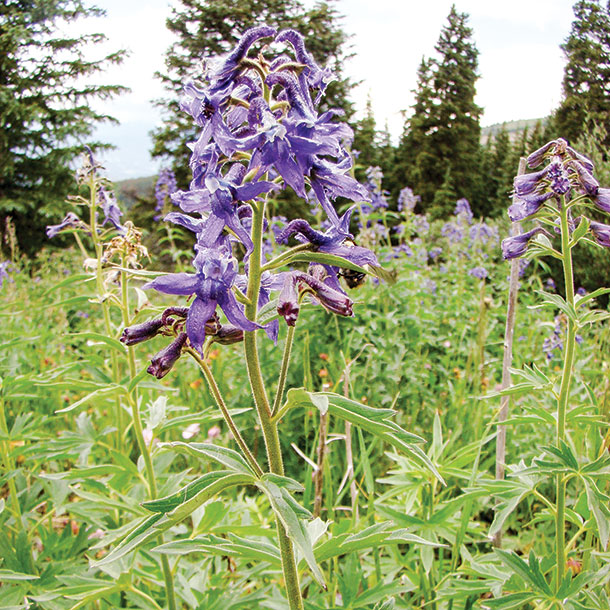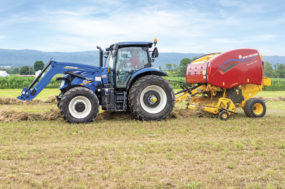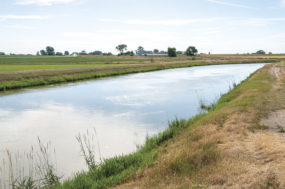Is that a conversation you’ve ever had with your nutritionist, veterinarian or local crop specialist?
Is it the weeds’ fault?

According to the USDA 2011 publication on the “Economic Impact of Poisonous Plants on Livestock,” direct losses (effects on animals) include the following:
- Death of livestock
- Abortions
- Birth defects
- Weight loss (due to illness or decreased feed intake)
- Lengthened calving interval
- Decreased fertility
- Decreased immune response
- Decreased function (due to damage to organs such as the nervous system, lungs, liver, etc.)
- Loss of breeding stock (due to deaths, functional inefficiency, etc.)
The good news is, out of the 20,000 species in the flora of North America cows might encounter north of Mexico, we know after centuries of intentional investigation that only about 10 percent of the flora is a cause for concern.
However, keeping the cumulative data in mind is rather a challenge, isn’t it?
Since the 1800s, stateside botanists have been compiling data on the poisonous characteristics of vegetation.
According to researcher Lynn James of the USDA Poisonous Plant Research Laboratory (PPRL) in Logan, Utah:
“Research on poisonous plants was instituted by the United States Department of Agriculture (USDA) as a result of serious livestock poisoning by plants as the pioneers moved West in the mid- to late 1800s and early 1900.” (Natural J Nat Toxins. 1999 Feb; 8(1):3-26)
So it could very well be that your cows have ingested some kind of vegetation that is having serious, if not lethal, effects. Notice that I said “vegetation.” It’s not just the weeds, you see; it could be a forage crop, trees and shrubs, or even the pretty little flowers planted around the homestead.
All you have to do is figure out which plant might be the cause. Not so bad, right? Except how do you go about doing that when all you have to go on is the half-digested rumen contents of a bloated cow? I can tell you: It’s rather like winning the lottery to actually find a large enough piece of leaf or intact fruit from this type of autopsy.
Most of the time, you’re just going to have to go back out and look. You will have to see if any of these deadly plants are or were in your grazing fields or crop fields.
There are about 50 species that are the culprits in livestock poisonings nationwide. The most commonly reported rangeland deaths are toxic alkaloid-producing plants like death camus and larkspurs.
But even crops like alfalfa, sweet clover, sorghums and even cannabis can be toxic under certain conditions. (Hey, it’s an emerging issue – sooner or later someone’s cows are going to get into a crop of someone’s weed.) The bottom line is: All of these plants – or their fruits, seeds or roots – have a substance that can poison livestock.
Some of these plant names are sure to raise an eyebrow. Aren’t they, after all, a crop? Yes, and that is why it is important to know ahead of time when, where and why these common and emerging cropping species might be the death of “Bessie.”
Unfortunately, it’s not just the lone cow that dies, as in the case of a death camus poisoning last year. “About 400 to 500 sheep were killed in the Eden Valley in northern Utah from eating the very toxic Zigadenus paniculatus.
This occurred in spring on a foothill rangeland, which is typically when most livestock, usually sheep, are poisoned on this plant,” says Jim Pfister, research scientist at the USDA PPRL laboratory in Logan. Death camus, also known as Toxicoscordion venenosumis, is one of the plants he and fellow chemists, Dale Gardner and Stephen Lee, are studying at the facility.
“We work on 10 major poisonous plants here,” Pfister says. They frequently receive larkspur suspected poisoning samples from ranchers, along with suspected pine needle abortion cases.
“We hope to provide preventative management solutions to help cattlemen learn what the toxin is, when it is most deadly, and when the animal might eat it or have resistance to it,” says Pfister. They are also developing genomic information on breed and individual animal resistance traits.
Unfortunately, the western PPRL is only one research facility studying a few poisonous plants commonly found in the U.S. “Most laboratories, ours included, do not staff plant taxonomists or botanists to help with plant identification,” Pfister says.
If you can connect with the right veterinarians, they can review a cause-and-effect list to help you narrow down the probable culprits. Your local crop specialist might also have a prepared poisonous plant photo presentation or can suggest a poisonous plant book with local vegetation.
It’s also helpful to know the toxicity ranking of poisonous plants. John Boyd from the University of Arkansas and his colleagues rank poisonous plants in their Poisonous Plants of Southern States presentation by grouping plants based on how highly toxic they are.
“Group ones (i.e., lethal if ingested) are the most likely culprits because the cows are quite dead. Group two are just as deadly, but cattle will rarely eat them unless there was nothing else.
Group three are considered very uncommon in your area – but with the movement of cattle, people and wildlife as vectors, that’s not always the case anymore. Group four and five are less likely to cause death, so if you’ve a keen eye and notice that your cows are just slightly off their feed, these might be a place to start,” Boyd says.
You can also make a list by species affected. Cattle, horses, sheep and swine react differently to different poisonous substances. If, however, you don’t feel comfortable absorbing all this information, there are still ways to get to the answer:
-
Hire a weed specialist to walk your fields. Make sure they have a background in identifying poisonous trees, shrubs, grasses, broadleaves and aquatics.
-
Contact your state animal toxicology laboratory and see if they can run a toxicology assay. This is not as easy as it sounds though. “It’s not like CSI,” Pfister says, referring to the TV show. If the chemist does not have an assay for the compound, it’s more of a hunch than anything else on how to proceed. So make sure you have a specific poisonous plant in mind before you request a test.
- Examine harvested feed for identifiable leaves, twigs and floral parts. If you can’t discern the bits and pieces, call your forage or toxicology testing laboratory and ask them who in your county or state are the go-to experts to identify poisonous plant parts.
If you still can’t figure it out, then broaden your search to include weather-induced scenarios, over-application of pesticide scenarios and forage residual concerns – or just blame the cow. ![]()
PHOTO: Tall larkspur (Delphinium barbeyi) is native to the western U.S. and often grows beneath aspen trees. It is toxic to humans and livestock and is notoriously responsible for cattle fatalities. Photo provided by Jim Pfister.

-
Melissa Bravo
- Certified Crop Adviser and Herd Health Specialist
- Meadow Lake Farm Consulting
- Email Melissa Bravo
Examples of known poisonous plants of livestock
Wolfsbane, buckeye, corn cockle, common cocklebur, onion species, fiddleneck, dogbane, milkweeds, locoweed, brassica genus, celandine, jimsonweed, larkspur, bleeding heart, foxglove, white snakeroot, snow on the mountain, tall fescue, golden chain laburnum, lantana, flax, alfalfa, sweet clover, death camus, oleander, Ponderosa pine, mayapple, prunus species, bracken fern, quercus species, rhododendrons, yews, crocus, buttercups, black locust, docks, elderberry, an algae bloom, deadly mushrooms, red maples, lambsquarters, pigweeds, sorghum-sudangrass, sicklepod, senna species, button bush, hemlock, crotolaria, sneezeweed, sumpweed, Indian tobacco, lantana, perilla mint, pokeweed, castor bean, black locust, ragwort, nightshades, sorghums, horsebrush, clovers, arrowgrass, cocklebur and cannabis.
— Contributed by Melissa Bravo.









